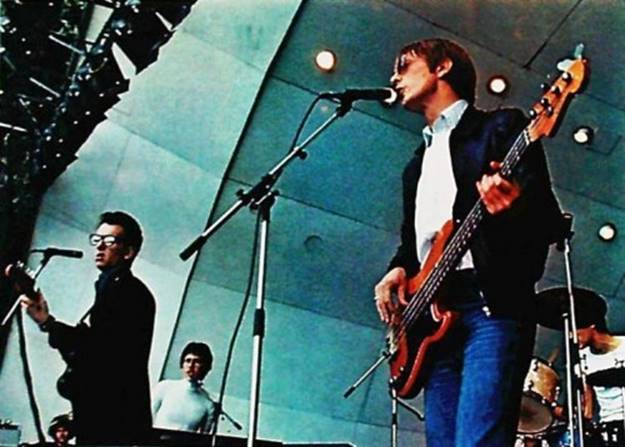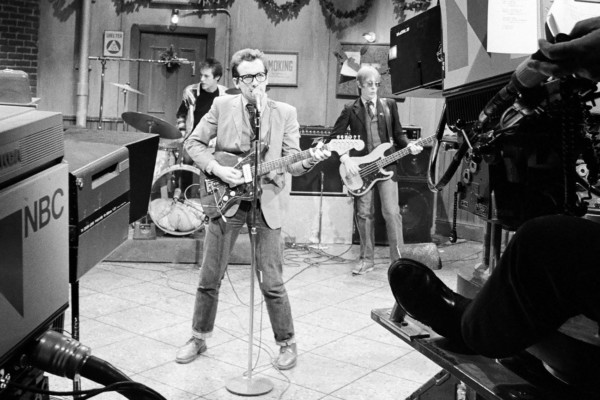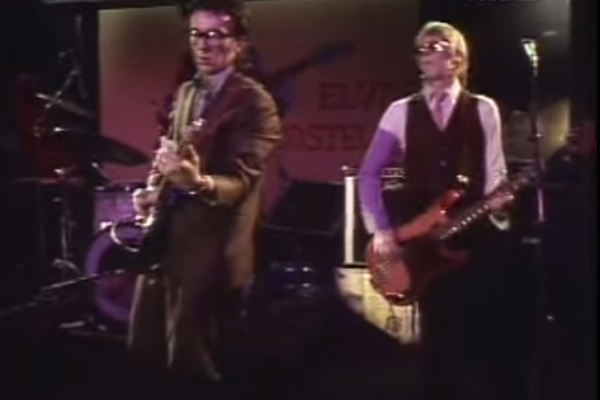Bass Transcription: Bruce Thomas’ Bass Line on Elvis Costello and the Attractions’ “Lipstick Vogue”

As there was a very positive response to last month’s transcription of “Oliver’s Army,” I thought that the No Treble readers might like another chance to have a look at Bruce Thomas’ work.
This track contains a much busier bass line than “Oliver’s Army”, and Bruce tips his hat to some of his influences within the course of the song. After a drum intro from Pete Thomas (no relation!), Bruce begins a distinctive and rhythmically R & B-like bass riff over a Bm chord that includes root notes, fifths, sevenths and a chromatic run back up to the root. This riff carries on into the verse, and after four bars, there is a two-bar semi-chromatic run that leads to a re-statement of the riff an octave higher. Bruce has suggested that this run was influenced by the Nathan Watts bass line in Stevie Wonder’s “I Wish”. This whole section is repeated which then leads to a shorter run and a version of the riff over an Em chord, leading into the chorus. Here, the rhythm for the main riff is used, but Bruce simplifies the notes, using roots and chord inversions in a descending line.
After a shorter verse sequence, the frenetic feel used since the beginning of the song ceases at bar 59 where Bruce begins a bass solo. He begins by using a rhythmically simple, root/third/fourth/fifth/seventh/octave idea over two bars, but as the solo moves forwards he gradually adds to the rhythmic complexity and also begins to include some chromaticism. By bar 67 he has cut the idea back to be contained within one bar, but the idea keeps developing rhythmically and reduced in length, so the last versions of the riff at bars 75-8 are only two beats long. Bruce Thomas has identified Paul Samwell-Smith’s playing as being influential here;
“The instrumental break of “Lipstick Vogue” for instance is my take on what [he] used to do in the famous rave-up instrumental sections in the Yardbirds’ live sets”.
After the bass solo, Thomas brings the volume and intensity down dramatically again and sticks to root notes in quavers through a verse sequence. The intensity gradually builds again, and at bar 99 he uses the semi-chromatic run from earlier to introduce the pre-chorus, and after the final chorus, the original riff returns and repeats to the end of the song which finishes with a crotchet triplet idea over G and Em.
“Lipstick Vogue” was never released as a single, but was a live staple for the band in its initial period. Costello has commented that the song was rhythmically inspired by trips on the London Underground, and by The Byrds song “I See You.”
Download the transcription and follow along with the video:

